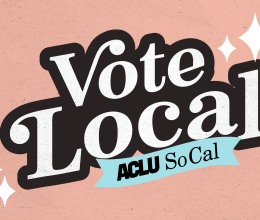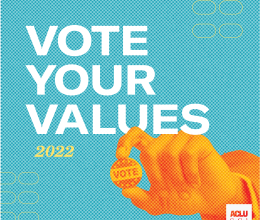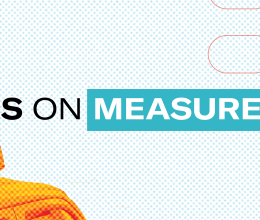
TUSTIN - The ACLU of Southern California has documented startling racial and ethnic disparities in the enrollment of students in Tustin Unified School District's Gifted and Talented Education (GATE) program. A letter sent today to Superintendent Richard Bray on behalf of concerned parents asked the district to reassess and correct how it identifies gifted students because the disparities raise serious legal concerns.
"GATE is a stepping stone to scholastic opportunity and achievement, and denying access to some students limits how high they can climb," said ACLU/SC Orange County director Hector Villagra. "GATE is an extraordinary opportunity. It's important to target all talented students, and this requires making special efforts to identify students who might be overlooked."
Latino and African American students are 'grossly underrepresented' in the district's GATE program, the letter states. TUSD uses a test-driven method to identify gifted students that is out of step with current practices that do not put low-income and Latino and African American students at a disadvantage.
Nearly 60 percent of GATE students in 2005-6 were white, compared to 8.6 percent Latino and 1.4 percent African American. (Districtwide, 43.1 percent are Latino, 35.8 percent are white, and 2.6 percent are African American.)
A measure of the odds of getting into Tustin's GATE program since 2001 showed Latino students are 86 percent less likely than white students to be admitted, and African American students are 74 percent less likely.
The district enrolled 1,956 students in GATE in 2005-6, roughly 10 percent of its student body of 20,195. The program extends from elementary school to high school honors classes.
"Current theory, research, and practice in gifted education demonstrate that effective identification policies can be developed that are not test-driven and do not disadvantage certain racial or ethnic groups," the letter states. It cites several examples.
Tustin parents are concerned that eligible childen not admitted to GATE are missing out on future opportunities. They want their children to be judged under standards capable of assessing talent in a fair manner, across all racial, ethnic, and cultural groups, and regardless of socioeconomic status.
The situation is graphically illustrated at the elementary-school level. Three schools with at least 90 percent Latino and African American students reported no students in GATE, while four others with a majority white students enrolled between 11 and 34 percent of their students in 2006.
State law prohibits schools from discriminating on the basis of income or race when considering admission to educational programs such as GATE.






